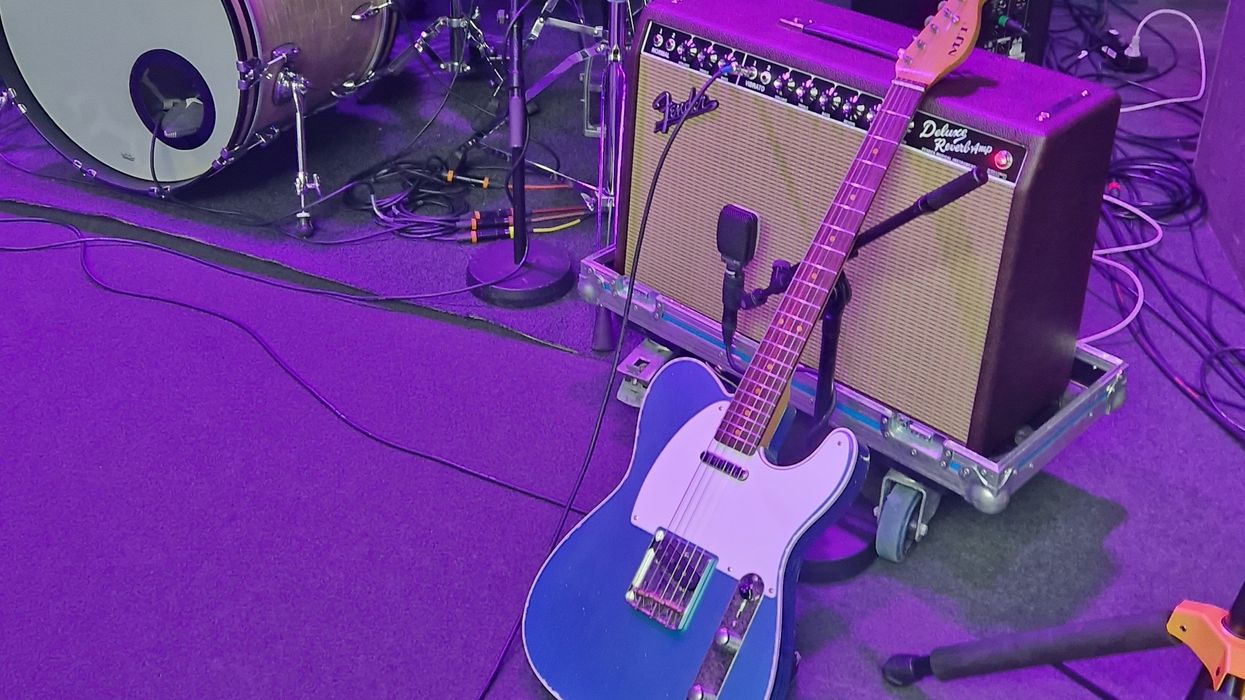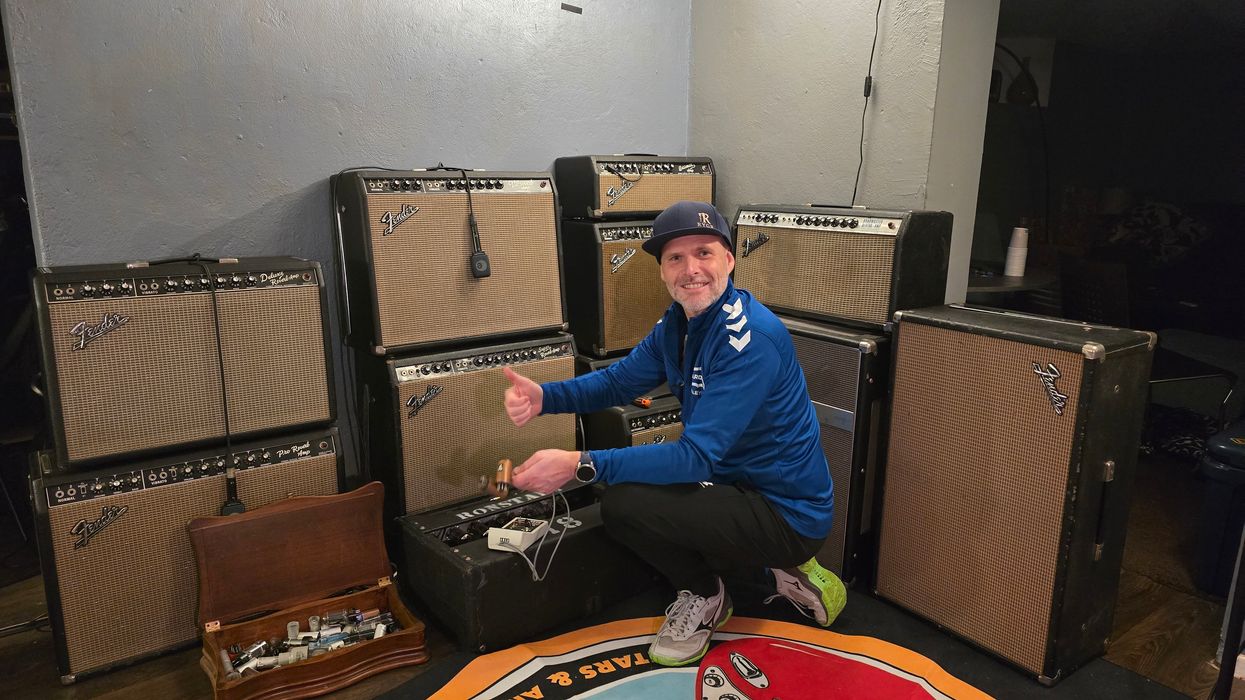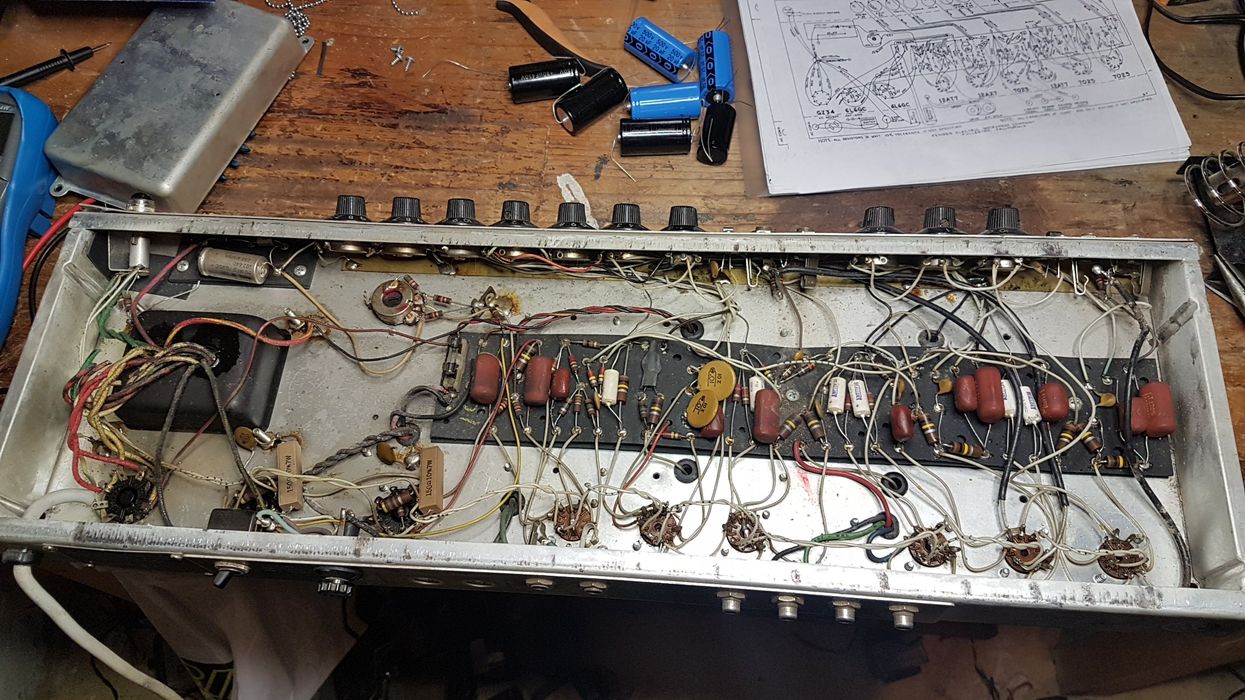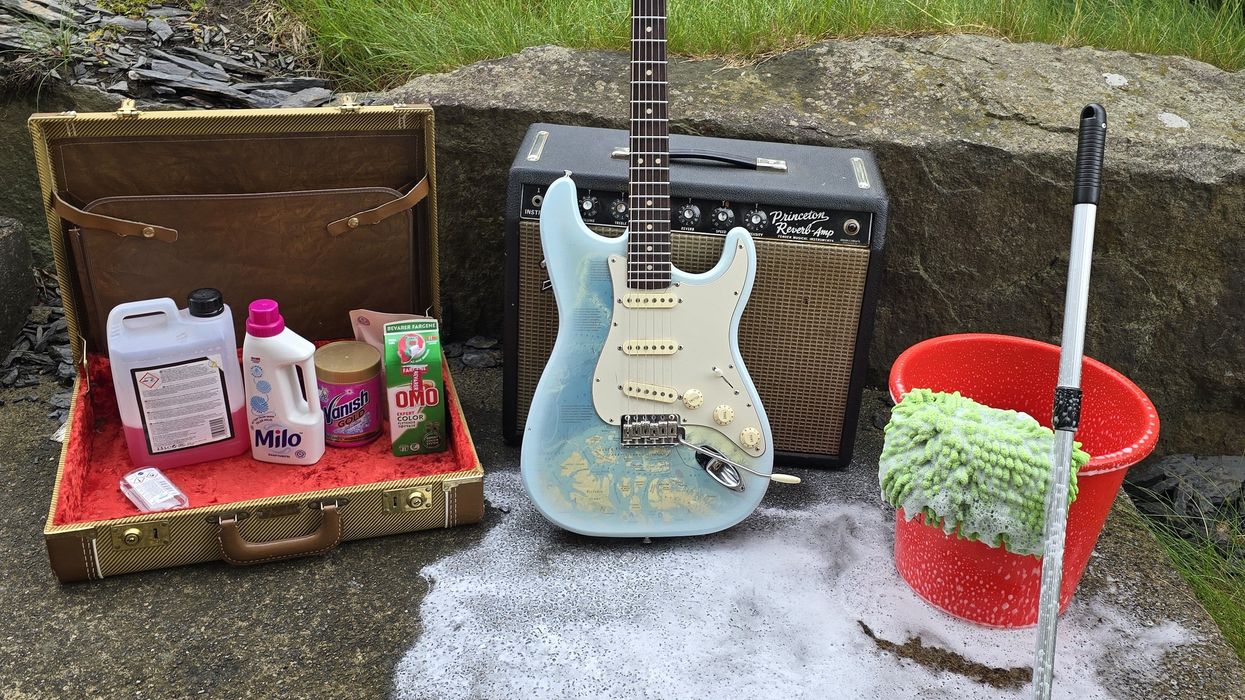Let's talk about speaker cabinets. If you have read my previous columns or been to my website fenderguru.com, you’ll know how much I value knowledge about speakers. Speakers affect the tone and volume vastly in guitar amps, and an extension cabinet is a smart and cheap way to get your tone right at practice, live gigs, or in the studio. In this column I will share my favorite amp and speaker cabinet pairings. As usual, I will refer to the classic black- and silver-panel Fender amps, which many of us enjoy.
I have plenty of extension cabinets lying around at home, including many that I have built myself. I use them across all the amps I have, with both combos and piggy-backs. Some are intended for British-style cranked tones, and some American vintage-style. Some cabinets have efficient and chunky speakers that can double the punch and spread on large stages, which I use when the speakers in my combo amps are not enough. More (and louder) speakers enable me to create a representative guitar tone on stage that everyone can hear well. “Sound good, play good” is one of my philosophies. Extension cabinets can serve other purposes too, such as lowering the volume for more breakup or mixing several speakers for a more complex and rich tone. There are so many interesting tone flavors that you should experiment with.
“The impedance mismatch gives me Hendrix’s JTM45 tones at reasonable volumes.”
Here are my all-time favorite Fender amp and cabinet pairings. All speakers are 8-ohm and wired in parallel, if not explicitly mentioned otherwise.
Black-Panel/Silver-Panel Bassman and Bandmaster
These amps’ flexible 4-ohm output transformers allow many different speaker configurations. The original 2x12 cabinet is very loud and chunky. If you use a 3x10 or 2x10 open cabinet with modest, vintage-style speakers, you will sound more like a Super Reverb, Vibrolux, or tweed Bassman. The 50-watt Bassman can push a 2x15 or even a 4x12 (ideally 16 ohm, with 8 ohm as second best) if you are in a “Who’s your daddy?” mood.
My favorite cabinet with the Bassman is a 1x12 semi-closed cabinet loaded with an Eminence Reignmaker with a 9 dB built-in attenuator. The impedance mismatch gives me Hendrix’s JTM45 tones at reasonable volumes.
Champ and Blues Junior
In their combo chassis, these amps can sound small and boxy. If you use a 1x12 semi-closed cabinet and disengage the built-in speaker entirely, you can take these amps to gigs. I recommend at least a Deluxe Reverb cabinet to get enough punch and spread.
Deluxe Reverb
With the 22-watt Deluxe 1x12, you can add an additional 1x12 for more spread and punch. If you replace the amp’s 6V6 power tubes with 6L6s, you have more power—roughly 30 watts—and can add a 1x15. Always remember to adjust bias when replacing power tubes.
Princeton Reverb
The small output transformer and inefficient phase inverter circuit limits the Princeton Reverb’s dual 6V6s to only 12 watts, with a flabby, loose low end. Therefore, I find the Princeton too weak to add an extension cabinet unless you disengage the built-in 10" speaker. Then it makes sense to use a 1x12 or 1x15 semi-closed cabinet for more punch and spread. This produces a wonderful, warm tone with significant breakup at modest volumes. A cool trick is to pull both 6V6 tubes and insert a single 6L6 for class-A operation and lots of distortion. When I use the 1x12 Eminence Reignmaker-loaded cabinet mentioned earlier, I get full tube distortion at almost bedroom level.
Vibrolux Reverb and Pro Reverb
The flexible 4-ohm configuration makes these amps perfectly suited for a 1x12 or 1x15 extension, for more spread and a mix of tone flavors. If I want to go really big, I disengage the inbuilt vintage-style speakers and hook up my Bassman’s 2x12 closed cabinet. Be aware that the small output transformer of these amps will limit the low end response.
Vibroverb
The undersized power transformer limits this amp’s low-end response. I don’t fancy adding another speaker because it gets too flabby with a 100 percent impedance mismatch.
Super Reverb
I rarely use extension cabinets with the Super Reverb because it’s already loud and punchy. On the contrary, I often disengage two of the four speakers to lower the clean headroom and volume. If you need more spread and send the sound in several directions, you could easily add a 1x12 cabinet and get a balanced and reasonable distribution of the amp’s 40 watts to all five speakers.
Twin Reverb
For those crazy players who need more from an 85-watt Twin, you can add an additional 1x15, with a resulting 50 percent impedance mismatch. Adding a dual 12" or 15" cabinet won’t make it louder since the impedance mismatch increases to 100 percent, which is the maximum I recommend.


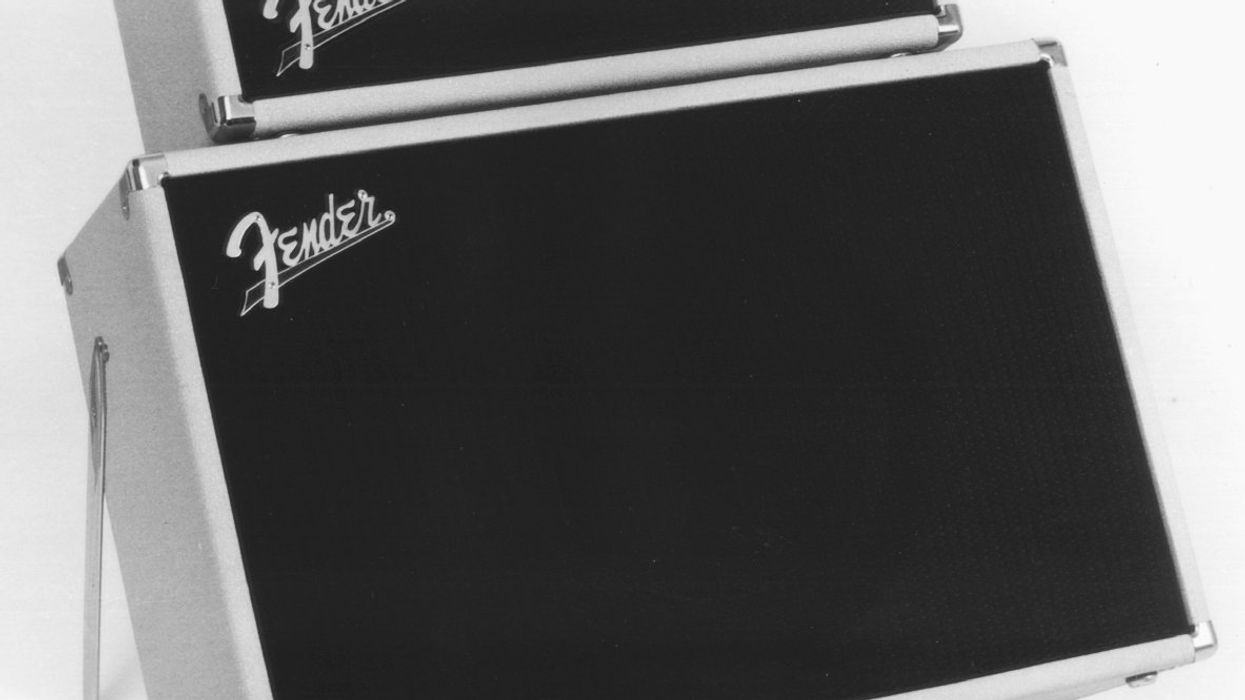



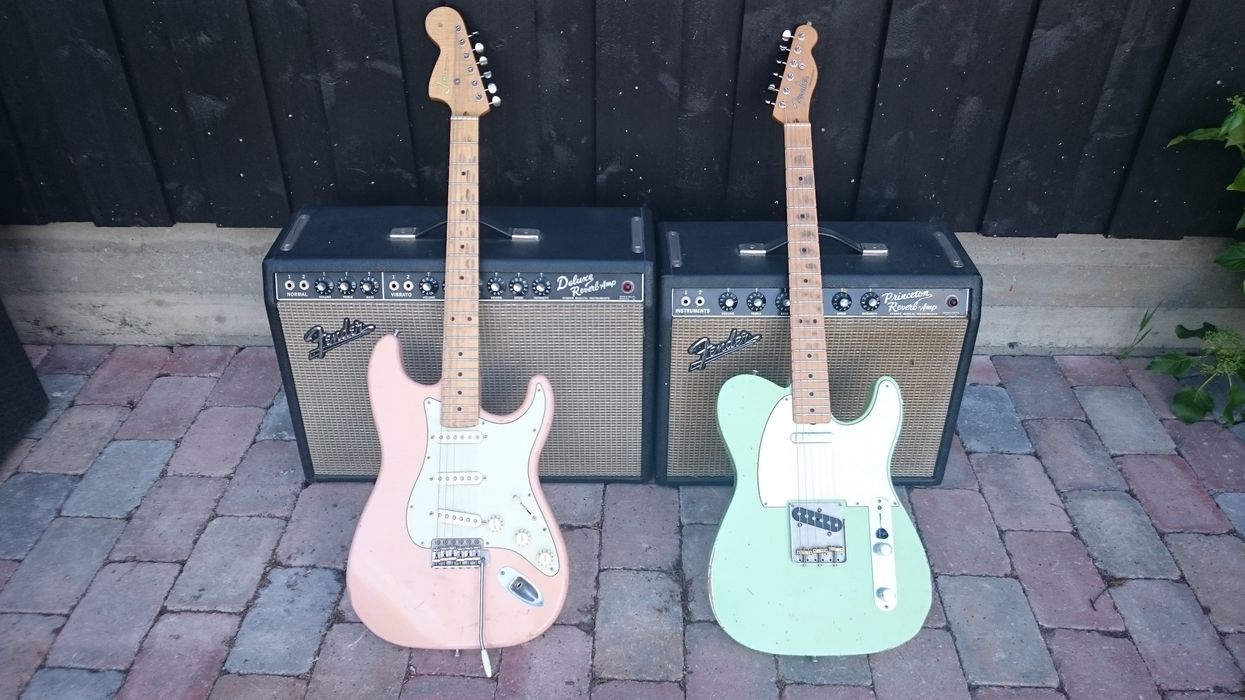
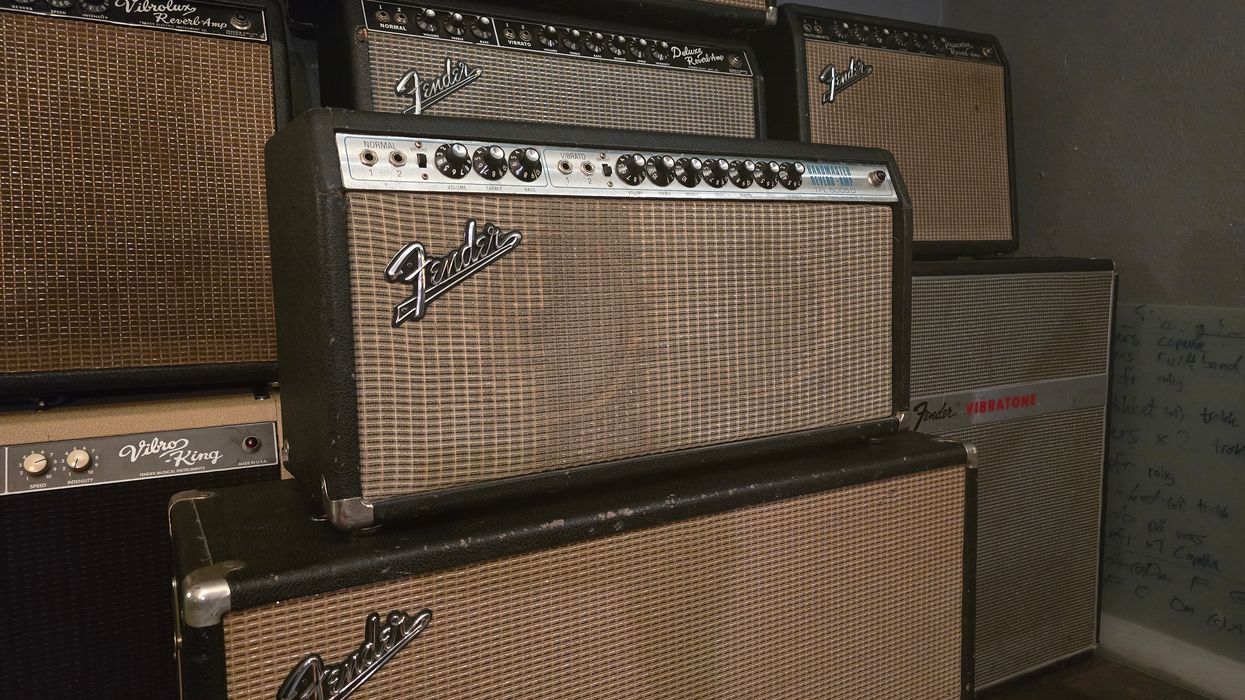
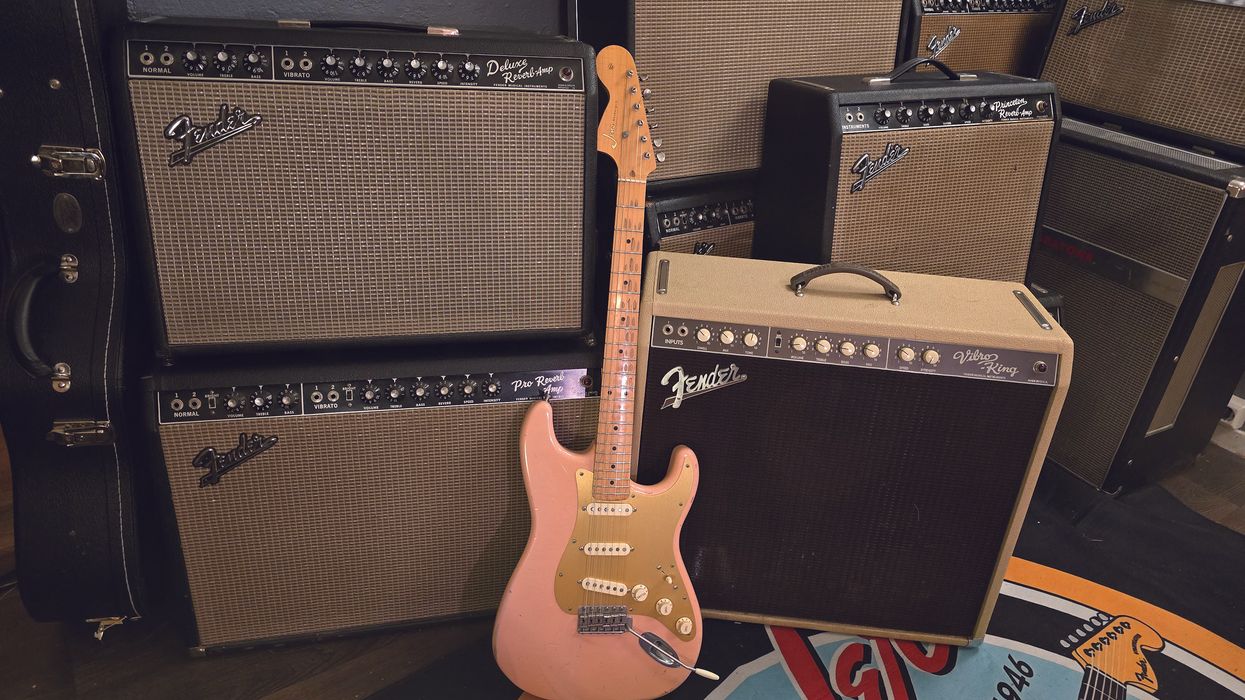


![Rig Rundown: Russian Circles’ Mike Sullivan [2025]](https://www.premierguitar.com/media-library/youtube.jpg?id=62303631&width=1245&height=700&quality=70&coordinates=0%2C0%2C0%2C0)



